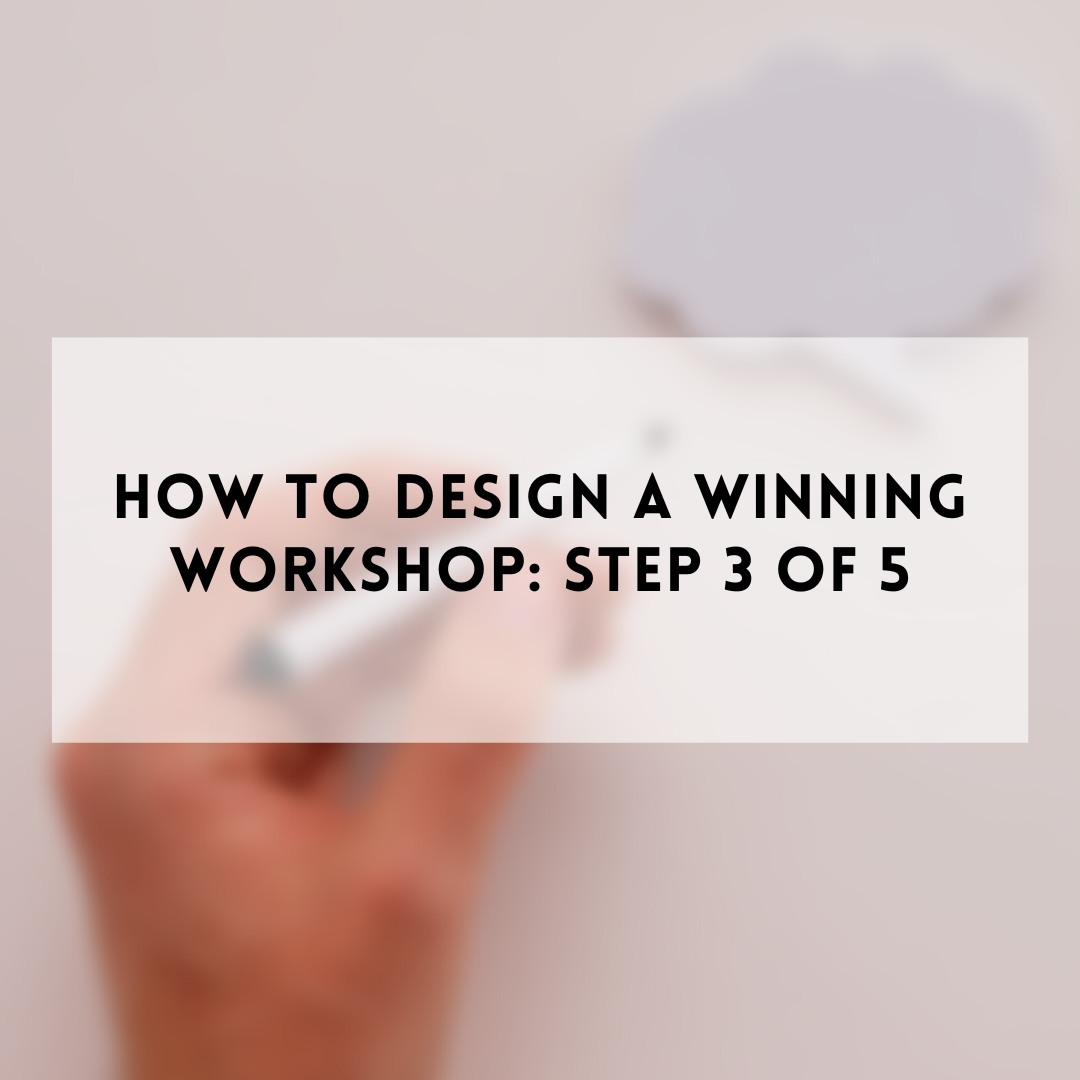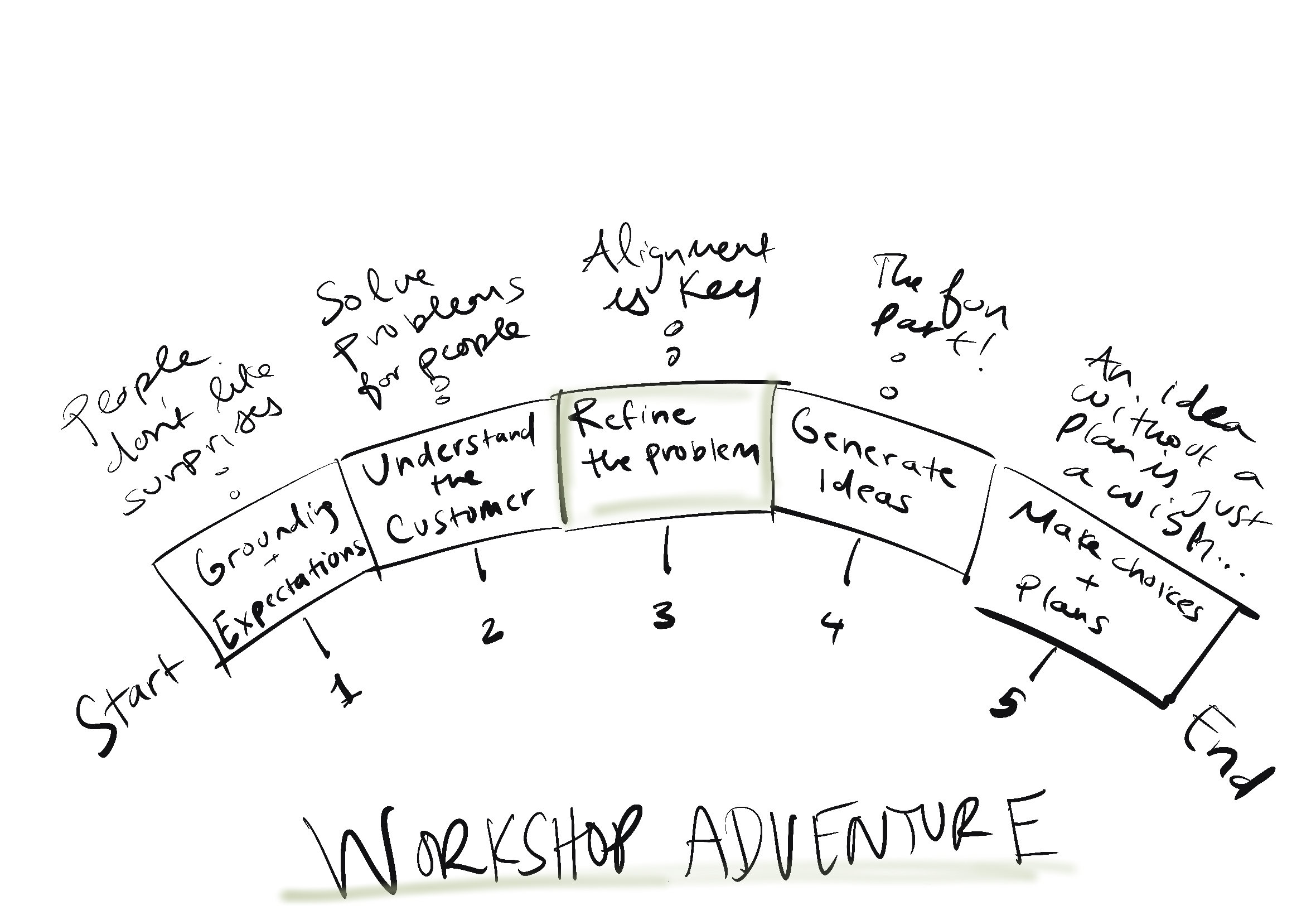How to design a winning workshop: Step 3 of 5
Have you ever experienced a moment in a workshop or meeting when it became abundantly clear that your participants weren’t on the same page about the objective for your time together? It’s a feeling most facilitators have encountered at some point in their careers and it’s not fun for anybody involved. But it’s also mostly avoidable if you make time for one very important aspect of workshop design: refining and aligning on the problem.
In today’s installment of this series on intelligent workshop design, I’ll be sharing methods and activities you can borrow to help your teams align on the problem to solve, and take steps toward refinement and narrowing when necessary.
Why do facilitators need to save space for problem statement refinement?
A surprising amount of teams try to jump straight into problem-solving without first making sure that everyone is clear about what they’re solving for.
When this happens, idea generation and solution exploration become unproductive and scattered. If everyone has a different end zone in mind, the paths to get there usually manifest at odds with one another, which is antithetical to a collaborative workshop.
Now, you might be saying to yourself, “our team already has some direction here.” That’s a good thing – in fact, it’s key to getting you set up for a productive workshop!
But that doesn’t necessarily mean everyone is 100% aligned on that prompt, which is why it’s critical to reserve space in your workshop to facilitate a clarity exercise.
The other benefit of doing this work prior to jumping into idea generation is that it gives you a north star to refer back to if one of your participants starts to wander off track or head into territory that doesn’t solve the problem at hand. You can say things like, “great suggestion, but remember we agreed to solve X problem today so I’m going to keep us focused on that outcome.” It’s such a powerful way to course correct while also being diplomatic!
What kinds of refinement activities help drive clarity?
I have a few go-to methods in my facilitation toolkit that help me run refinement exercises. The goal here is to twofold: 1). Determine the level of alignment the team already has around the objective, and 2). Help the team narrow their focus.
Sometimes you’ll discover that the focus is already very narrow, in which case you can move quickly through this phase. Other times it’s more broad, which will require more effort to hone in on a specific focus before you advance.
Here are some activities you can try based on the level of decision-making required for your team:
Review the existing problem statement and confirm that it’s still correct
Put the problem statement up on the whiteboard for everyone to see. Then hold it up against the information you gathered during Part 2 when you dug into customer needs. Does the statement still feel accurate? What parts need to shift, if any? If the team feels like refinement or revision is needed, have them each spend time drafting a revision independently, then ask them to share their versions. Does the group agree on one version? This might be a good time to host a vote so you can identify the winning statement (here are a few ways to facilitate the voting process diplomatically and efficiently).
Have the team draft “How Might We” statements
If the original problem statement feels like it needs some work, ask the team to draft “How Might We” statements to help give them direction. If you sense this will be the case from the onset, ask the team to take notes during earlier parts of the workshop to help inform this activity. I typically give my participants about 5 minutes to draft their own statements, sharing a few examples to help seed the work. Once finished, ask them to share their statements, then choose 1-3 options to frame the focus of your time together.
Facilitate a job-stories method
If the team is having a hard time figuring out where to start, facilitate a job-stories method to hone in on key moments that are important for the customer. Here’s a guide for running this exercise. Once identified, have the group agree on the top 3-5 problems to solve for.
Facilitation tip: Sometimes this process can be done inside of an hour, but other times it takes longer to tackle. To help keep things moving, I love designating a “decider” to make the final call on tie-breakers. Even with this role assigned, it’s important to spend the necessary time to make sure the team feels clear and confident in their choices before moving on.
What does problem statement refinement look like?
Depending on what your problem statement looks like going in, pausing to align and refine can feel a bit nebulous and high stakes. That’s why I’m offering up a couple of real scenarios from my work to help you take a look at the way this might shake out, whether you’re starting with a broad or narrow problem statement:
Broad:
I once facilitated a workshop where the team wanted to define a new offering by using a combination of existing assets and new enhancements. In this case, the problem statement was broad:
“How might ABC analytics stand out from competitors and apart from the core offering so that prospective customers see ABC analytics as the best option and current customers who would be a good fit see upgrading as a clear value add?”
In this example, the team needed to get narrower and align as a team. They defined problem statements that were more specific and that focused on the issues they needed to solve for the customer before starting to explore solutions. This took a bit of time but made the next phase of the workshop much more productive.
Narrow:
Another real-life example that felt a bit more narrow was when a team wanted to improve a known issue with an existing software product that was used by paramedics. Our problem statement was:
“How might we create an experience that makes viewing and inputting patient information as simple as possible for paramedics so that they feel supported rather than frustrated by the software?”
In this scenario, the issue was known and we didn’t need to spend as much time refining the problem statement. Rather, we explored the real-life context that this data capture would happen within and agreed that if we could reduce manual data entry in any way, we’d be going a long way in helping medics do their job.
No matter how focused you think your team is heading into a workshop, it’s absolutely essential to include time for refinement during your session. The time required will flex based on where the team stands, but the important thing is to make sure you’ve established clarity prior to exploring ideas and solutions. This precursor will save you and your participants a lot of headaches, ensuring better outcomes across the board.
If you haven’t already, check out Part 1 and Part 2 of this series.

